

William Stopford
The cars revealed in 2025 we wish would come to Australia
7 Hours Ago
You pay a price for the Jeep Wrangler's excellent off-road ability and buckets of character. There's the relatively high RRP, for one, not to mention a mediocre safety rating.
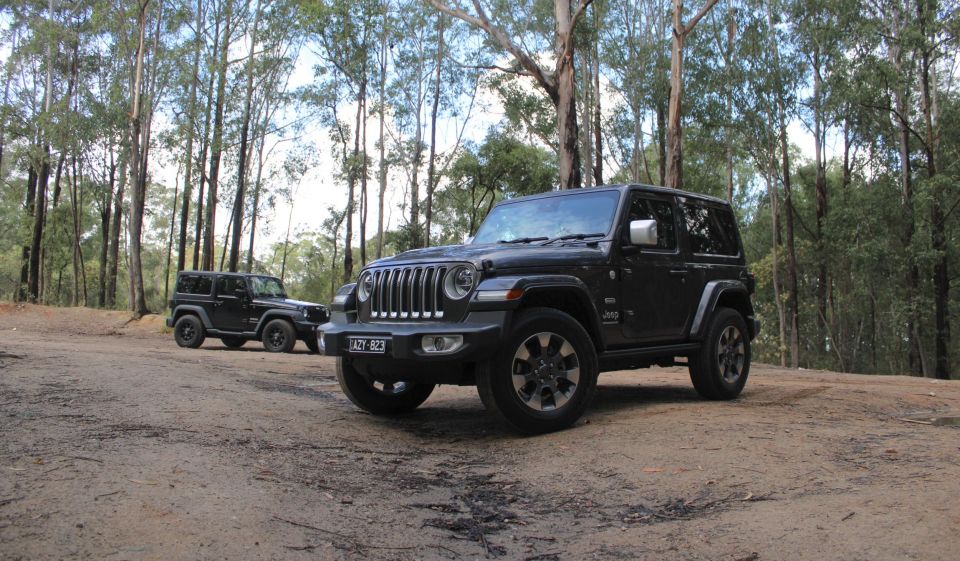


News Editor
New from
$59,450
excl. on-roads

News Editor
New from
$59,450
excl. on-roads


News Editor
New from
$59,450
excl. on-roads

News Editor
New from
$59,450
excl. on-roads
Quickly see how this car stacks up against its competition. Select any benchmark to see more details.
Where expert car reviews meet expert car buying – CarExpert gives you trusted advice, personalised service and real savings on your next new car.
So, you’re interested in a Jeep Wrangler?
We could ask how much off-roading you actually do and, if the answer is ‘not much’, point you towards countless cheaper, more comfortable SUVs that’ll demolish the average fire trail.
We could also suggest you save some money and buy a Suzuki Jimny if you want an occasional bush-basher, or steer you towards a used four-wheel drive you could modify and thrash to your heart’s content.
But you’ve already made up your mind, haven’t you? You’re set on a Jeep Wrangler. Very well, let us tell you what it does well and how the new JL series improves the breed over the previous JK.

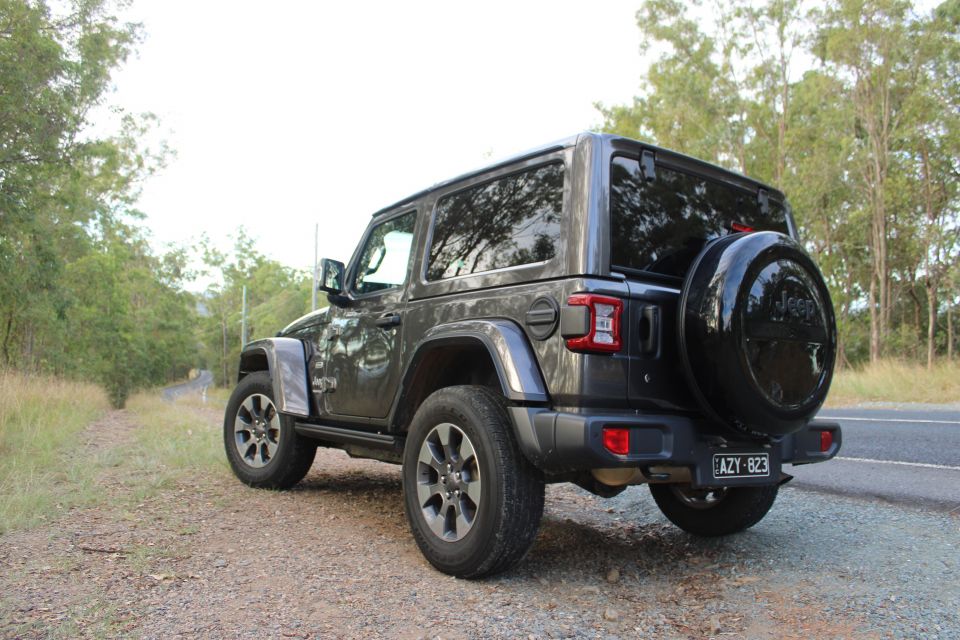
Jeep only offers the two-door body style in two trim levels: the featured Overland and the base Sport S. The latter is currently at dealerships only in model year 2019 spec, with a model year 2020 model belatedly joining the range later this year. It can’t arrive soon enough as the Overland has a price around $10,000 higher than the MY19 Sport S.
The Overland costs $59,450 before on-road costs, while opting for the four-door Wrangler Unlimited body style adds $4500.
Sport S and Overland models come exclusively with a petrol V6 engine. If you want a diesel Wrangler, you have to pony up for the more rugged Rubicon.
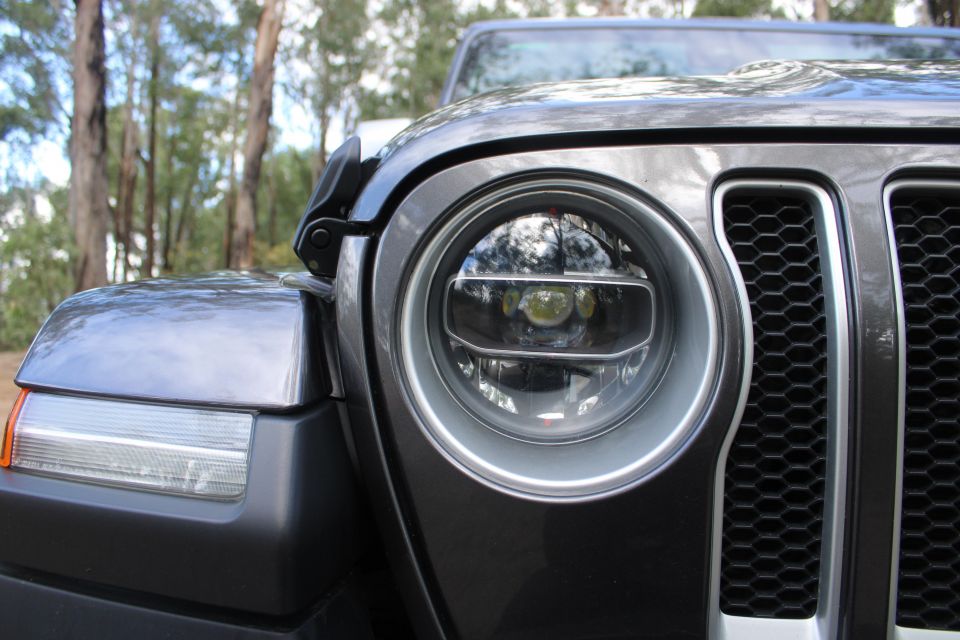
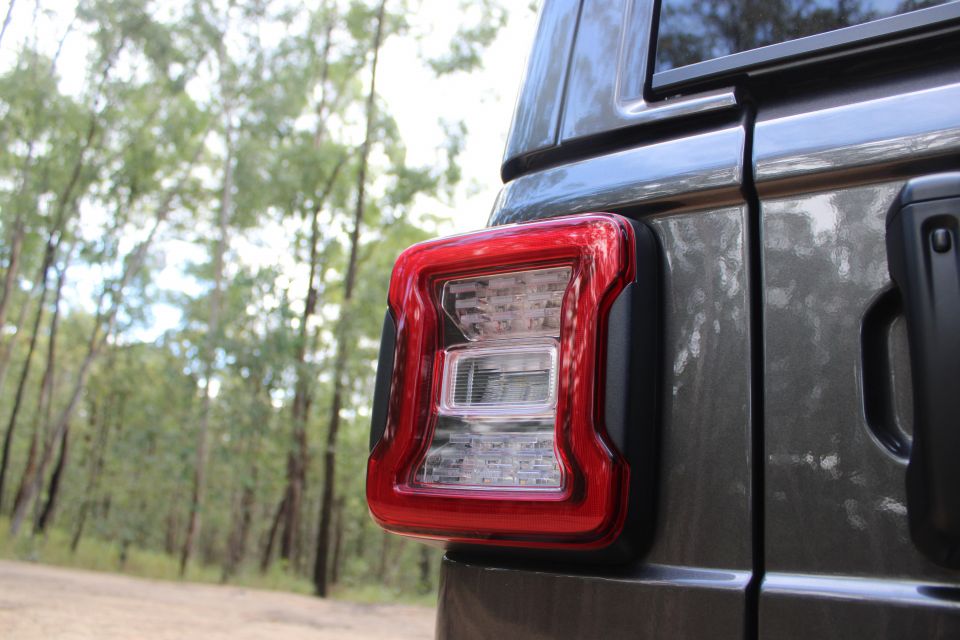
Buy your new car without the stress. It's fast, simple and completely free.

Great service from Travis and team, second time I have used this business would not hesitate to recommend them to anyone
Craig C.
Purchased a Ford Ranger in Sunshine Coast, QLD
CarExpert helped Craig save thousands on his Ford Ranger, now let us save you on your next new car.
Find a dealThe Overland isn’t the most expensive Jeep Wrangler but it’s actually the best equipped, if you’re looking purely at comfort and convenience features. For example, there’s standard leather upholstery, heated front seats, a leather-wrapped shifter, and a heated, leather-wrapped steering wheel.
To get these features on the range-topping Rubicon, you need to select the $1950 Rubicon Luxury package.
Standard on the Overland is an 8.4-inch touchscreen infotainment system with Android Auto, Apple CarPlay, DAB+ digital radio and satellite navigation. Other standard features include adaptive cruise control, proximity entry with push-button start, a nine-speaker Alpine premium sound system, remote start, and a reversing camera with front and rear parking sensors.
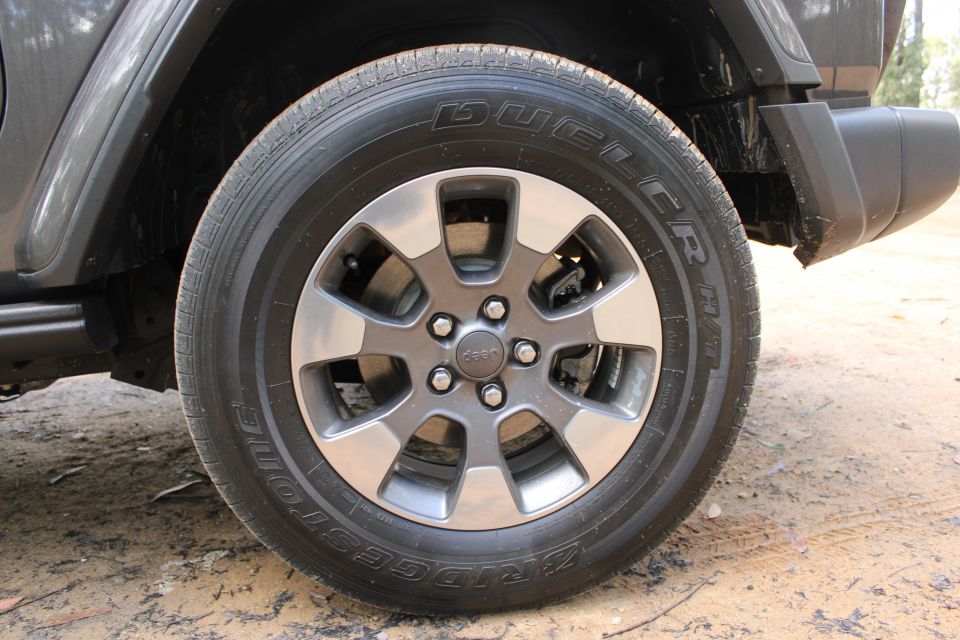
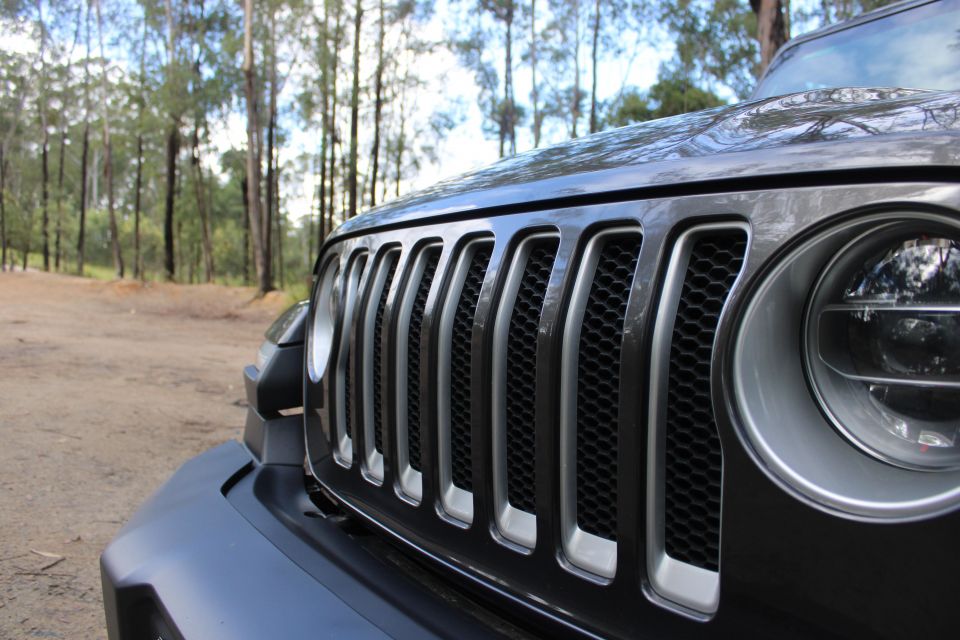
Outside, you’ll find 18-inch alloy wheels shod with 255/70 tyres, LED lighting front and rear, as well as a body-colour grille, hardtop and fender flares.
Where the Overland and Rubicon differ is in their off-road hardware. The Overland uses Jeep’s Selec-Trac four-wheel drive system, which features a two-speed transfer case. The Rubicon upgrades to Rock-Trac, which adds locking front and rear differentials and an electronic front sway bar disconnect. There are also 17-inch wheels wrapped in BF Goodrich 255/75 off-road tyres.
If you want to save some money, you can opt for the MY19 Sport S but you’ll drop down to a 7.0-inch touchscreen and an unbranded eight-speaker sound system. You’ll also miss out on leather trim, LED headlights, adaptive cruise control, front parking sensors, proximity entry and satellite navigation.
Last year, the Jeep Wrangler made headlines with its one-star safety rating from ANCAP. That was based on testing of the entry-level Sport S which lacked standard autonomous emergency braking with forward-collision warning. These features were already standard on the Overland, which received an ANCAP rating of three stars – better, but still not great.
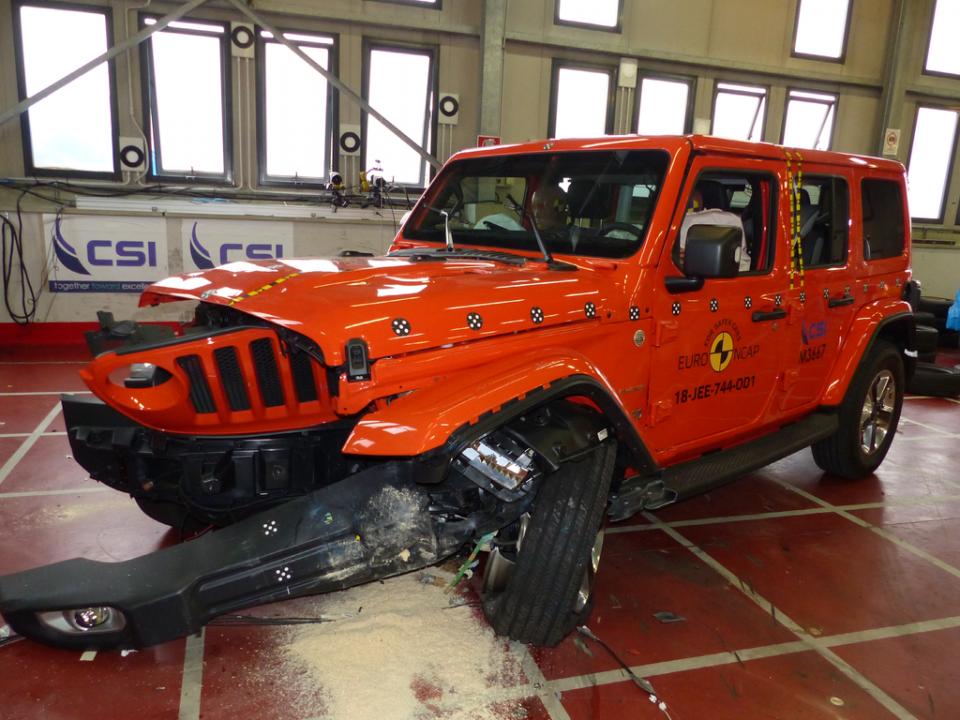
Following the shocking one-star result, Jeep announced it was rolling out autonomous emergency braking as standard across the range. The model year 2020 Sport S will feature this essential safety equipment when it arrives later this year.
In the meantime, if you go to a Jeep showroom seeking the safest possible two-door Wrangler, you have to pony up an extra $10,000 or so for the Overland and add a lot of extra equipment you mightn’t even want. Best to wait.
The Overland’s superior three-star rating was based on an adult occupant protection score of 60 per cent, child occupant protection score of 80 per cent, vulnerable road user protection score of 49 per cent, and a safety assist score of 51 per cent. That last score was up from the measly 32 per cent score given to the Sport S.
The Overland also comes standard with anti-lock brakes and front and front-side airbags. Rear cross-traffic alert is standard only on the Overland and Rubicon, while curtain airbags aren’t available on any Wranglers.
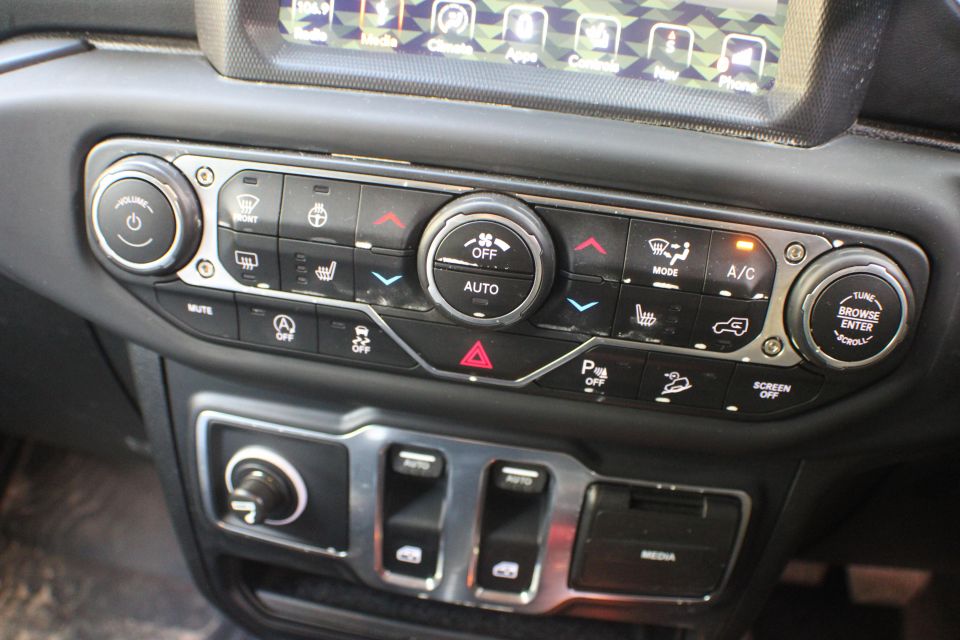
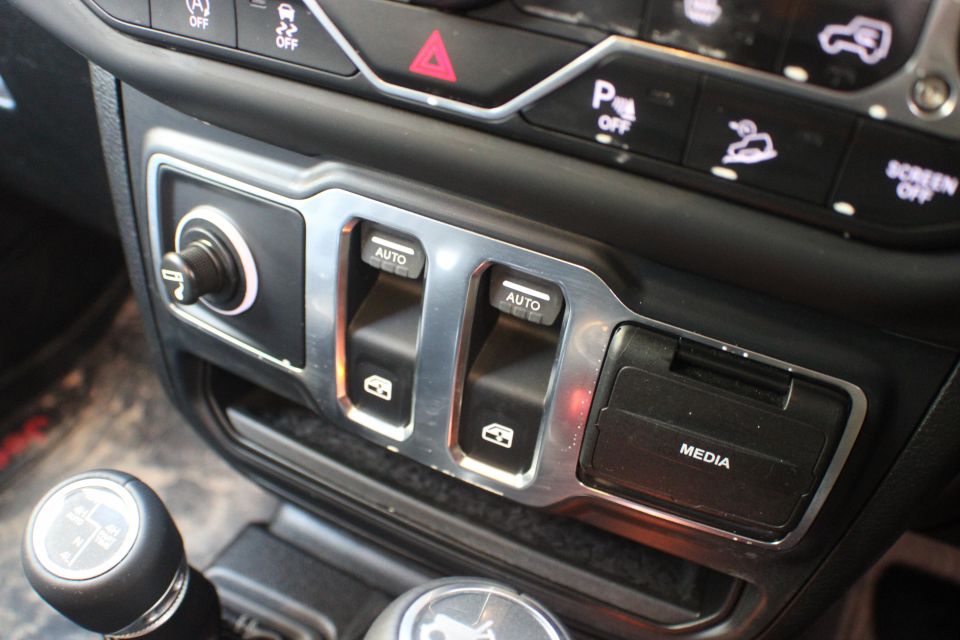
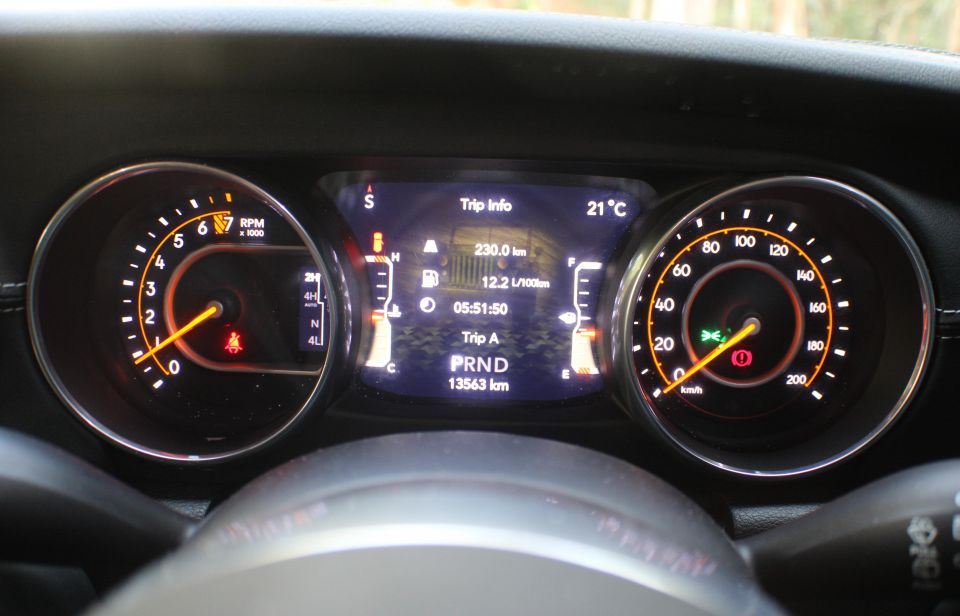
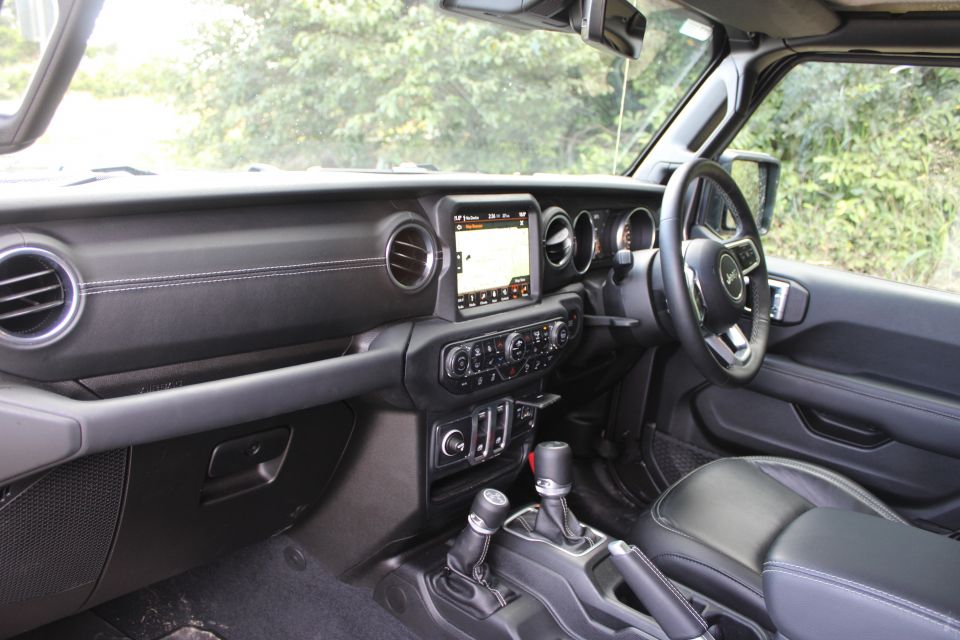
The old Jeep Wrangler’s interior was either plastic fantastic or no-nonsense, depending on your point of view. With the new model, Jeep has elevated the ambience.
The last vestiges of the DaimlerChrysler era of Jeep interiors appear to have finally been banished, with the clunky, gated shifter replaced with a chubby one with a nice, fluid motion. The four-wheel drive selector remains stiff, though, and you have to yank it to move it between detents.
The tops of the door trims are now finished in soft-touch plastic. There are also stitching elements across the dash top and in front of the passenger, though it’s only a simulation of a leather-wrapped dash as it’s still quite firm and sturdy. There’s also an interesting rubbery material around the sides of the touchscreen.
The climate controls have been moved up a tier on the dash to just below the touchscreen, which makes a lot more sense. Otherwise, it’ll feel pretty familiar to JK owners, from the grab handle on the passenger’s side of the dash to the window controls on the centre stack.
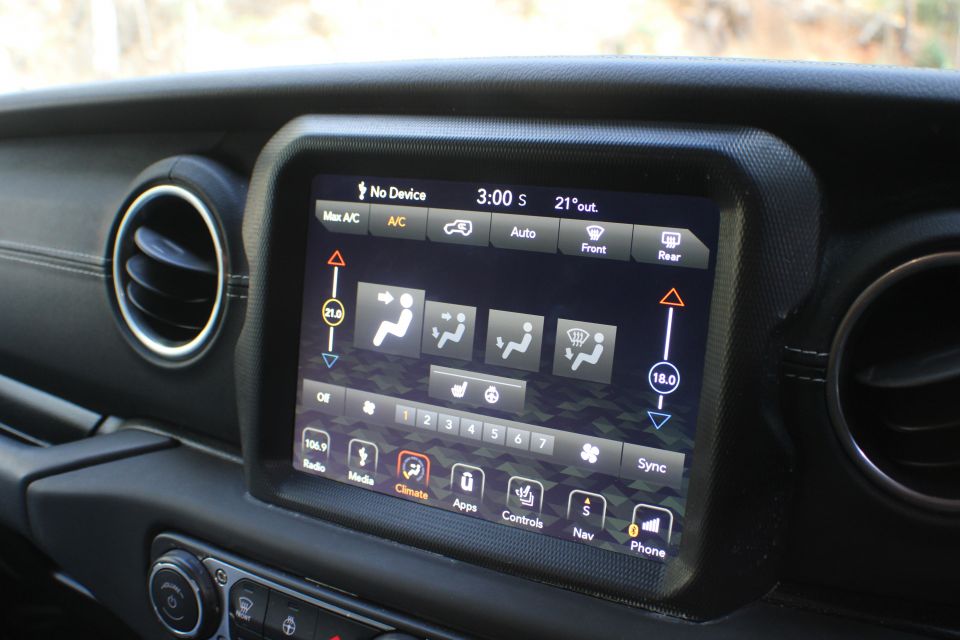
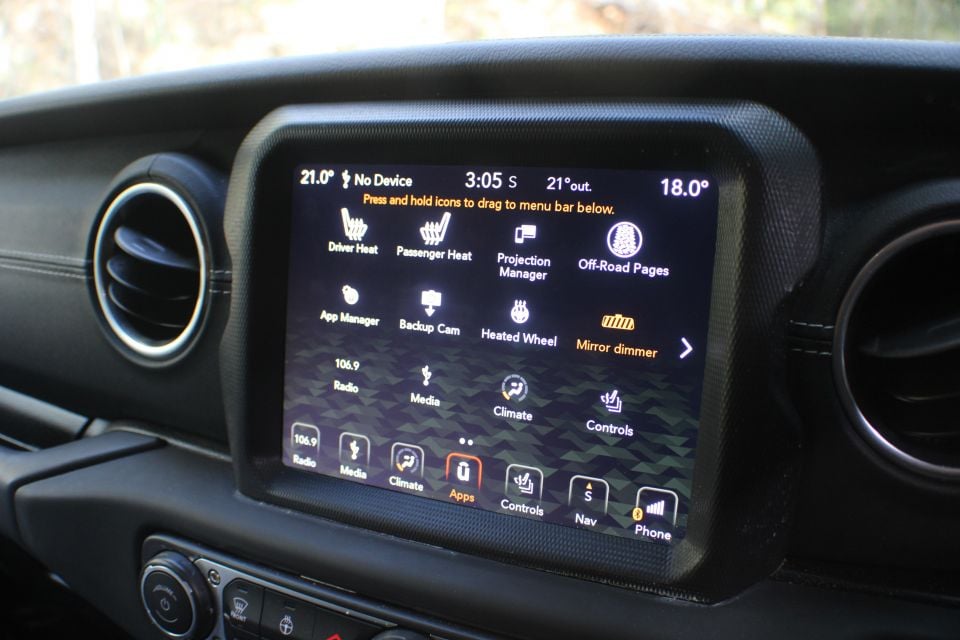
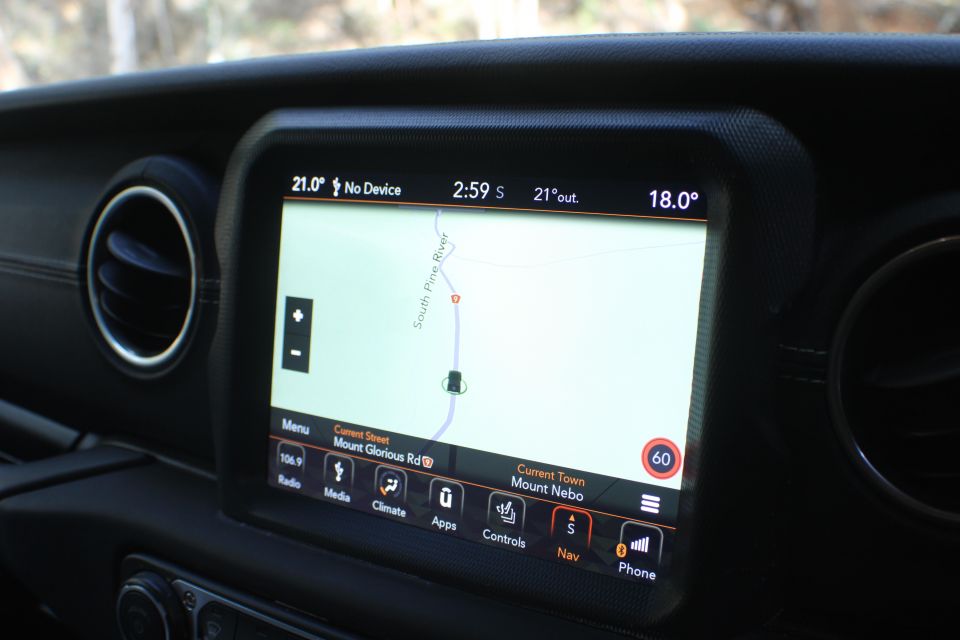
FCA’s uConnect infotainment remains one of the better systems on the market. Its response times are quick, it’s easy to navigate, and it’s visually appealing.
Even the satellite navigation — often a weak spot for infotainment systems — features attractive, legible maps. You can move the map around with your fingers as you can with Google Maps and, in modern Jeep tradition, there’s an easter egg to be found: in some map views, your Wrangler is represented with an outline of an old Willys Jeep. Cute.
Better yet, uConnect solves a common issue. When somebody calls you to ask where you are but you’re somewhere unfamiliar, you no longer have to read off street names until they figure out your location. Instead, the navigation always displays the suburb or town you’re currently in at the bottom of the screen.
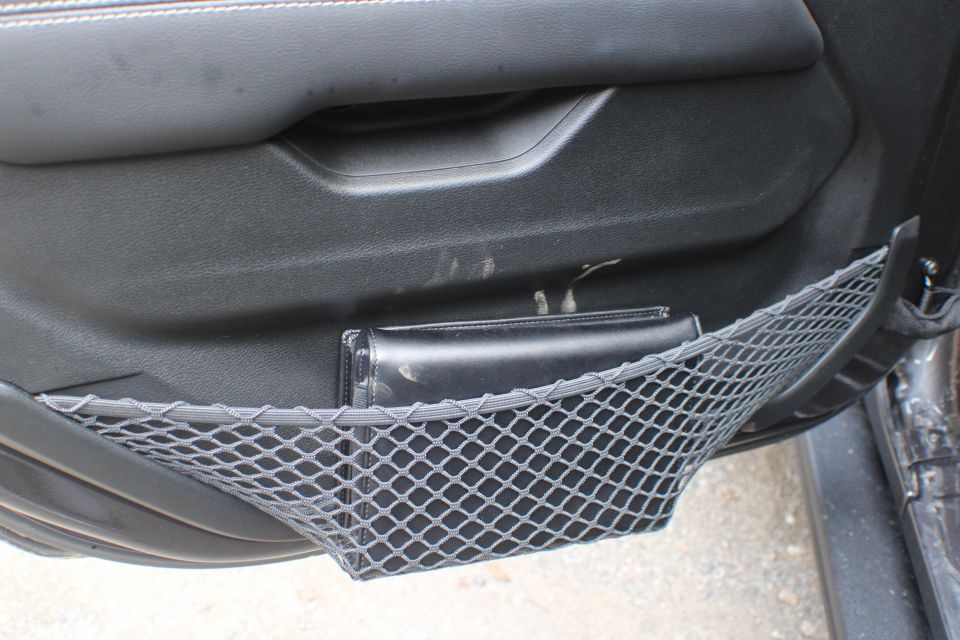
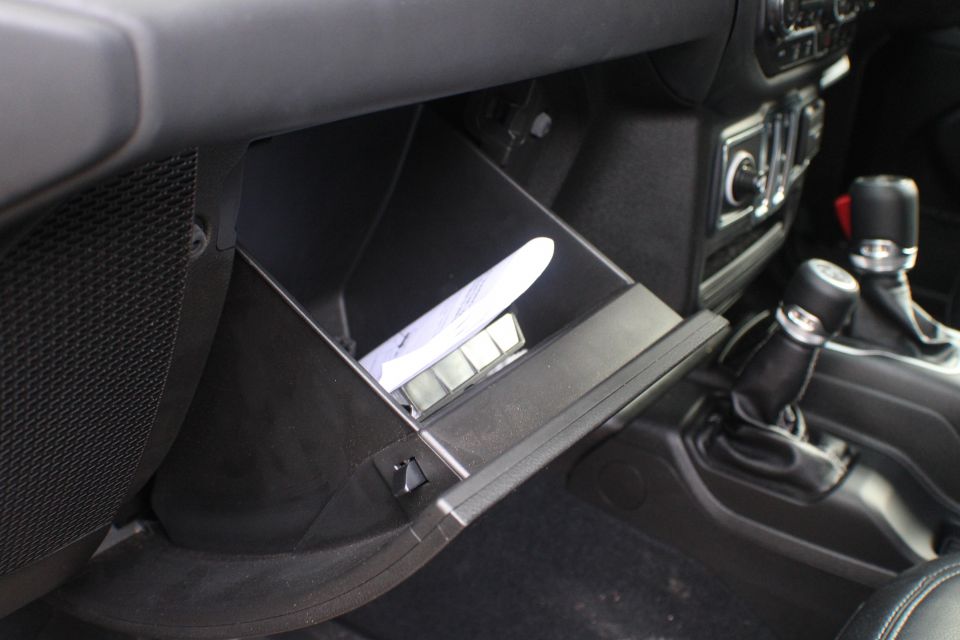
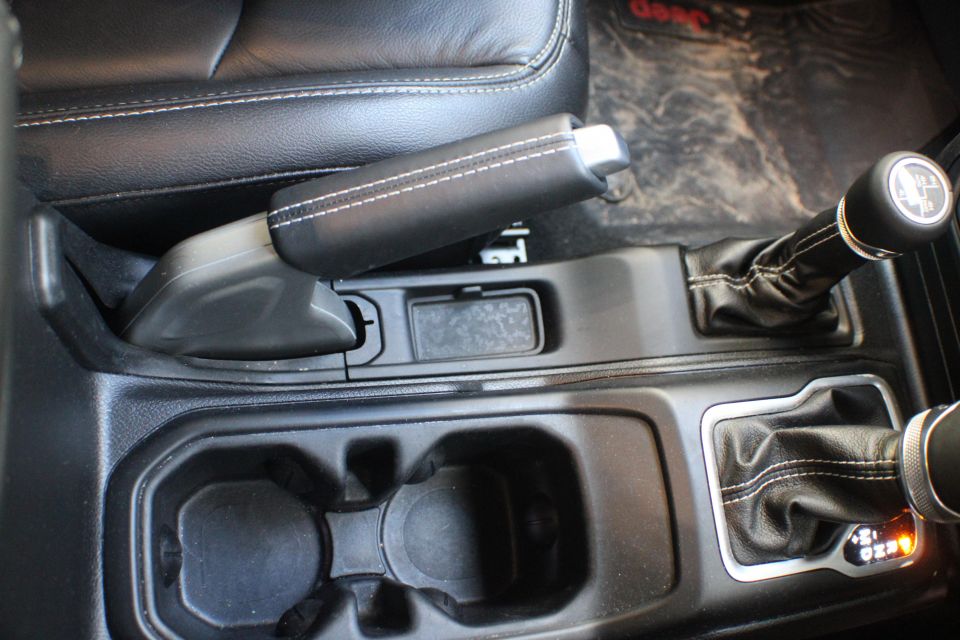

Grab handles mounted on the A-pillar help you clamber into the cabin. The JK we tested lacked these, which made you almost have to limber up before attempting the ascent into the seat.
Cabin storage is mediocre. The glovebox, for example, is so small that our tester had the owner’s manual sitting in a netted pouch in the passenger’s side door.
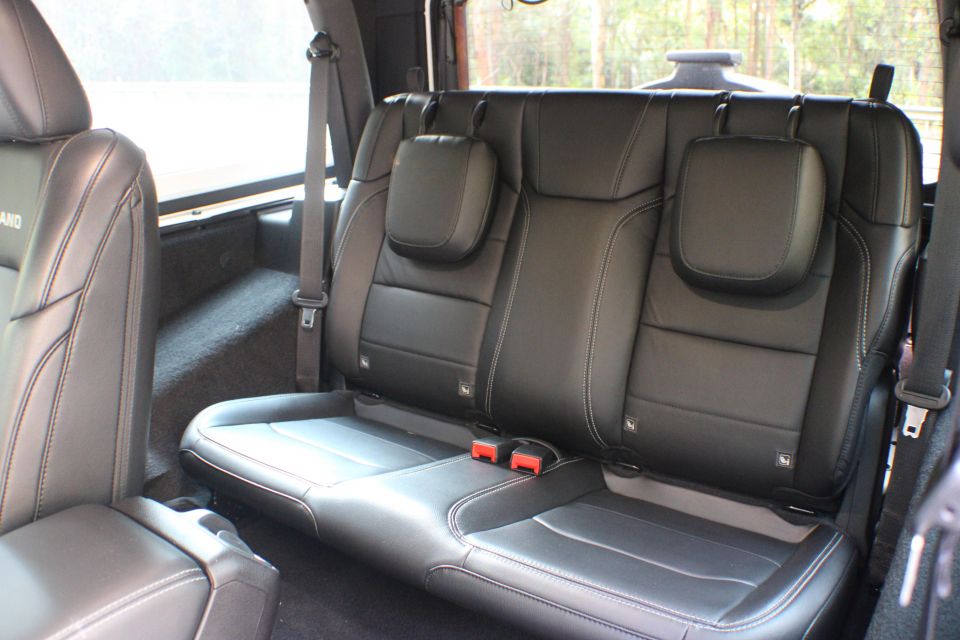

The front seats are quite flat and lack much in the way of bolstering. That’s good news if you’ve put on a few pounds during this Coronavirus lockdown.
Fortunately, they proved quite comfortable even over several hours of driving, though some thicker bolstering would be nice for off-roading. We’d also like a wider footwell – the narrow space means there’s no room for a footrest.
Clambering into the back, you’ll find seating for two. It feels a bit claustrophobic but toe room is quite decent and both knee- and head room are relatively comfortable for someone around 180cm tall. The seat backs are soft and scooped out, too, while rear seat occupants get air-conditioning vents, a 230V outlet, and two cupholders on the floor.
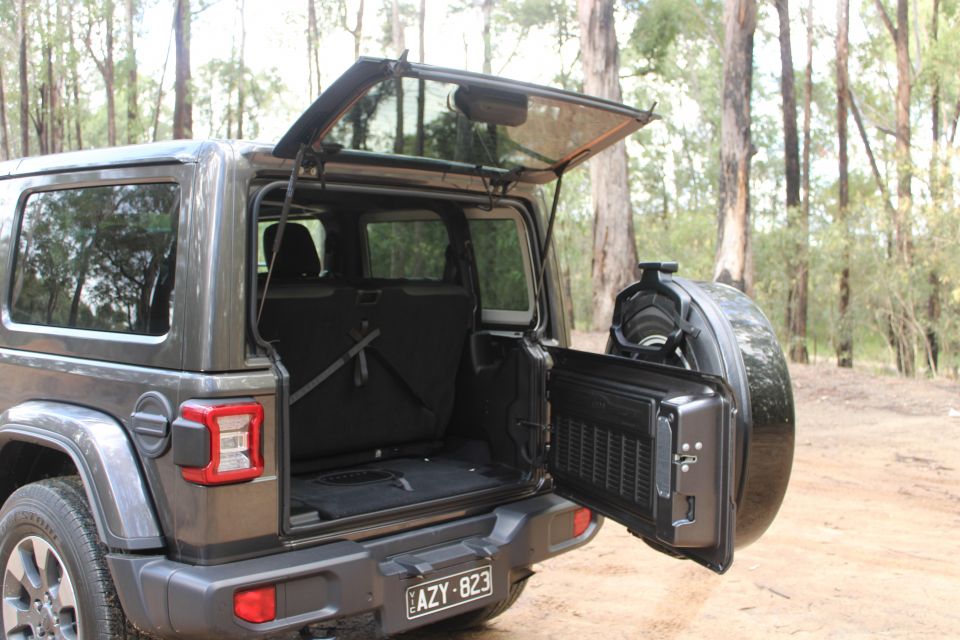
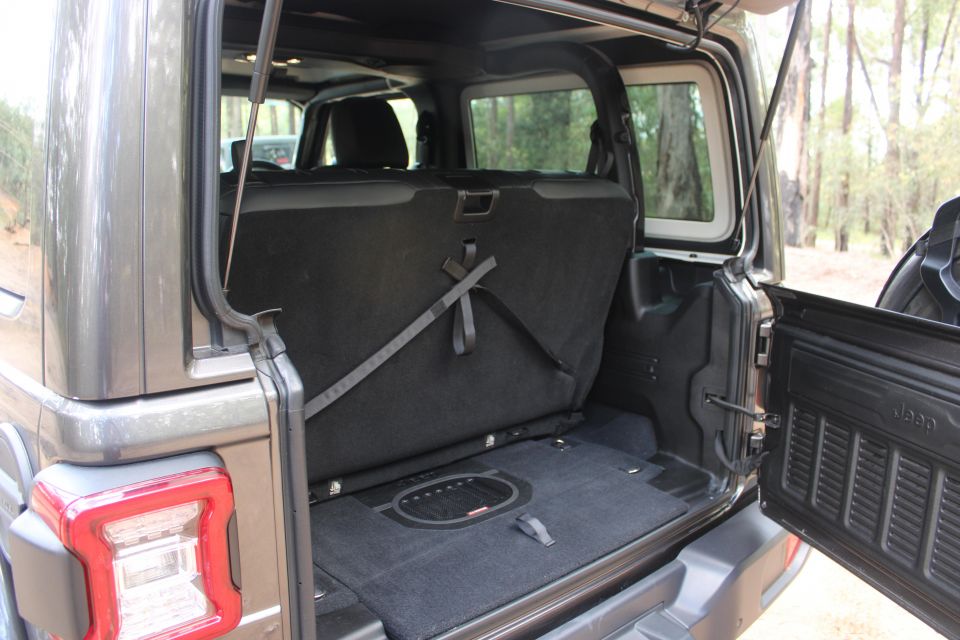
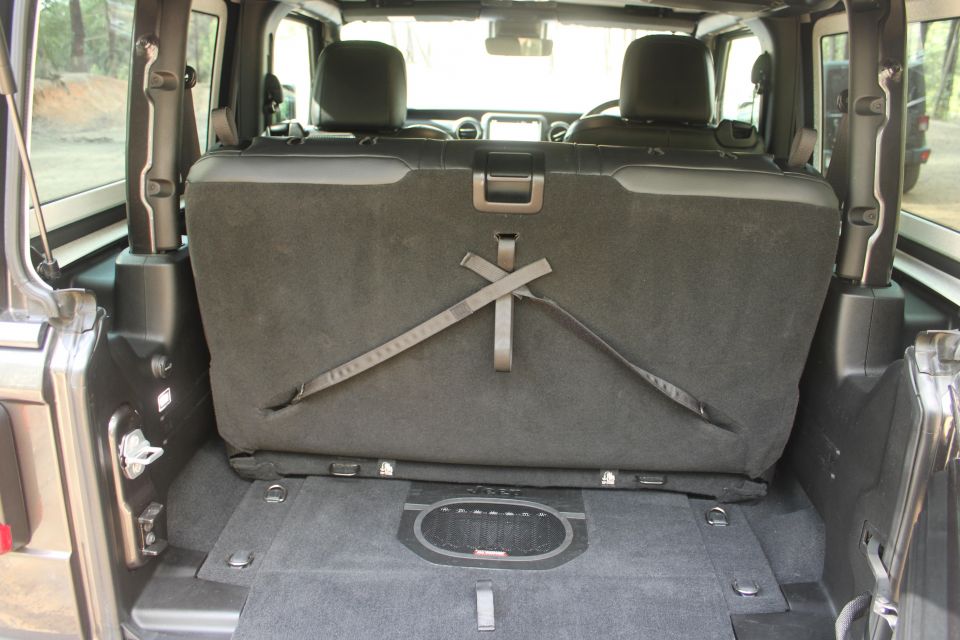
Removing the roof panels is child’s play, allowing you to enjoy the open air. If you’re looking to stow these in the boot, however, be warned: with just 197L of cargo volume, there’s not much room back there. It expands to 587L with the rear seats folded. All you have to do to lower the headrests is pull a strap and they fold down instantly, which is neat.
The JL also continues Wrangler tradition in featuring removable doors and a fold-down windscreen.
Overall, the Wrangler’s interior successfully balances rugged useability and material quality. There was also a complete absence of rattles during our time with the Wrangler.
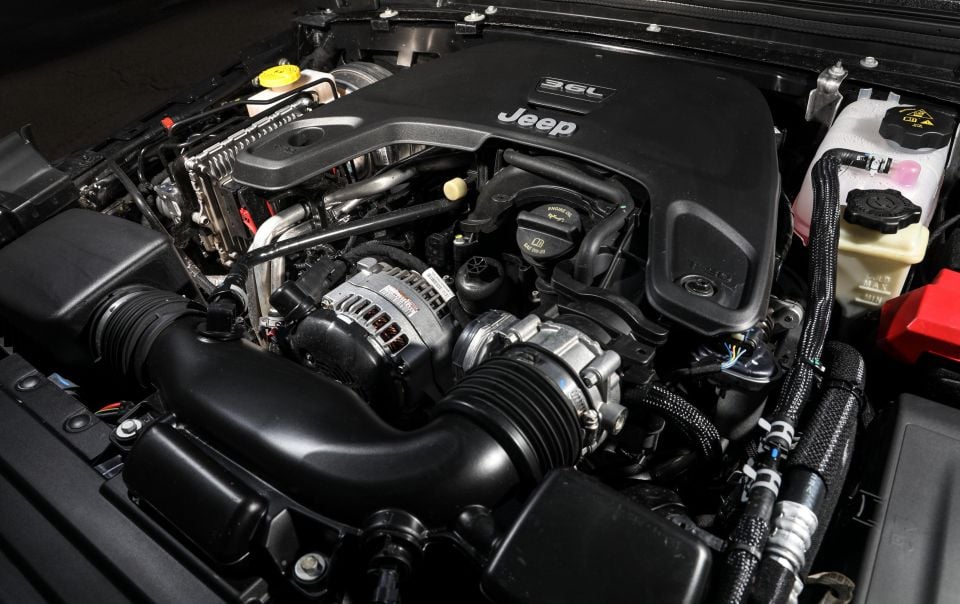
The Wrangler Overland uses FCA’s Pentastar naturally-aspirated 3.6-litre V6 engine, producing 209kW of power and 347Nm of torque. It’s mated exclusively to a ZF-sourced eight-speed automatic transmission.
There’s a six-speed manual transmission available overseas, but not here. That goes as well for the Hurricane turbocharged 2.0-litre four-cylinder engine, which features a mild-hybrid system called eTorque. With 201kW of power and 400Nm of torque, not to mention improved fuel economy, it’d make a worthy addition to the local range.
Jeep is also introducing a plug-in hybrid variant, badged 4xe, as well as its VM Motori-built EcoDiesel 3.0-litre turbo-diesel V6 engine, as seen in the Grand Cherokee. Neither of these have been confirmed for Australia.

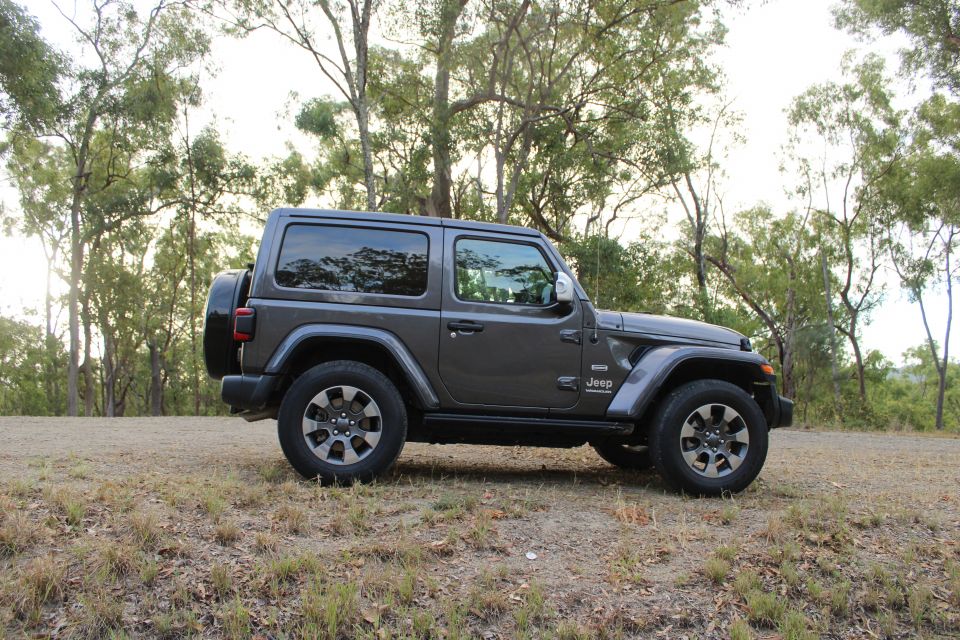
Getting behind the wheel of a Jeep Wrangler is about managing your expectations. If you know it’ll perform well off-road but be less than comfortable on it, then your expectations will be met. You may even be pleasantly surprised.
Yes, the Wrangler does have a fidgety, unsettled ride on bitumen. However, this is one of the few SUVs that retains a live front axle, in addition to a live rear axle. Even the latest Mercedes-Benz G-Class has switched to an independent front suspension. Put into that context, the Wrangler’s ride quality is actually half-decent and it doesn’t buck and heave over bumps.
While the Pentastar V6 was carried over from the JK, the eight-speed automatic transmission is new. It’s helped give the Wrangler a greater sense of urgency on the road.
In comparison, the old Wrangler’s five-speed automatic feels like it holds the power for ransom. while its steering is noticeably heavier. The newer truck feels quicker on its feet, with lighter steering and much-improved acceleration.
The throttle is actually a little touchy. It wouldn’t be the first time an American car had an eager throttle but, fortunately, the Pentastar V6 doesn’t run out of steam higher in the rev range. It’s a flexible engine that works superbly in tandem with the eight-speed automatic.
The best part? The Pentastar V6 sounds bloody good. Mind you, the Wrangler isn’t as noisy as you might expect on the road. If the noise bothers you, though, you can turn up the volume on the Wrangler’s excellent nine-speaker sound system.
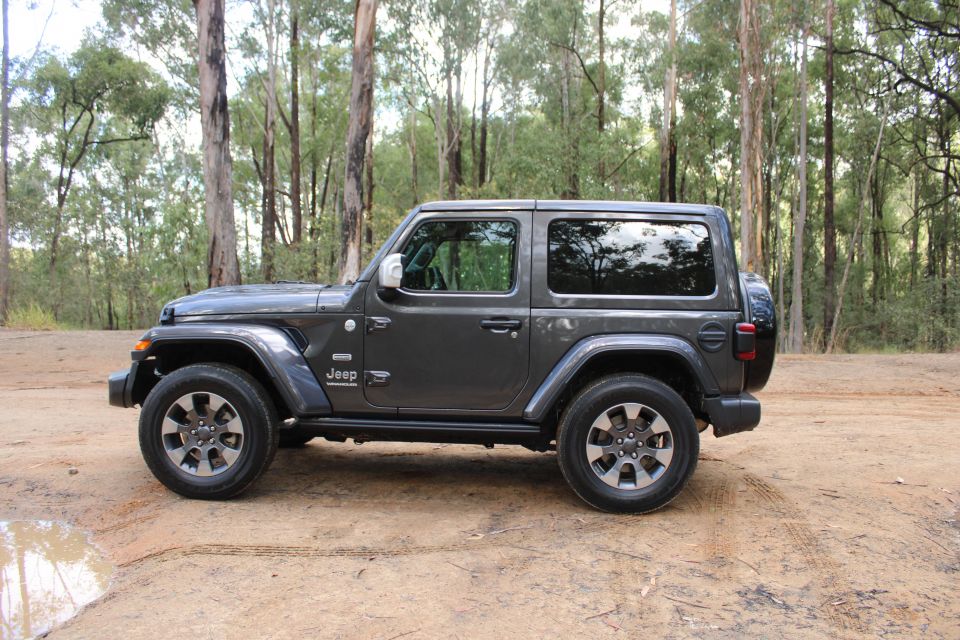

You quickly become accustomed to the way the Wrangler drives. While the V6 is lovely to listen to, you learn to slow it the hell down in corners – it may drive better than before but it still feels like an ox-cart around a sharp bend.
The Wrangler has a relatively tight turning circle of 10.5m so it feels maneuverable around town. Its peculiar dimensions take some time to get used to – it’s slightly shorter than a Toyota C-HR, for example, but it’s roughly the same width as a LandCruiser Prado.
While it’s gotten better to drive on the road, it hasn’t become commensurately worse off the road. There’s really nothing better off-road than a Wrangler except another Wrangler.
That’s because, in addition to its locking differentials and disconnecting sway bar, the flagship Rubicon has a 4.10 low-gear ratio and a slightly higher departure angle (31.9 degrees vs. 29.2).
Mind you, the Rubicon is strictly a four-door offering now so there’s no way to get the most hardcore four-wheel drive system with the two-door body, which measures a considerable 584mm shorter.
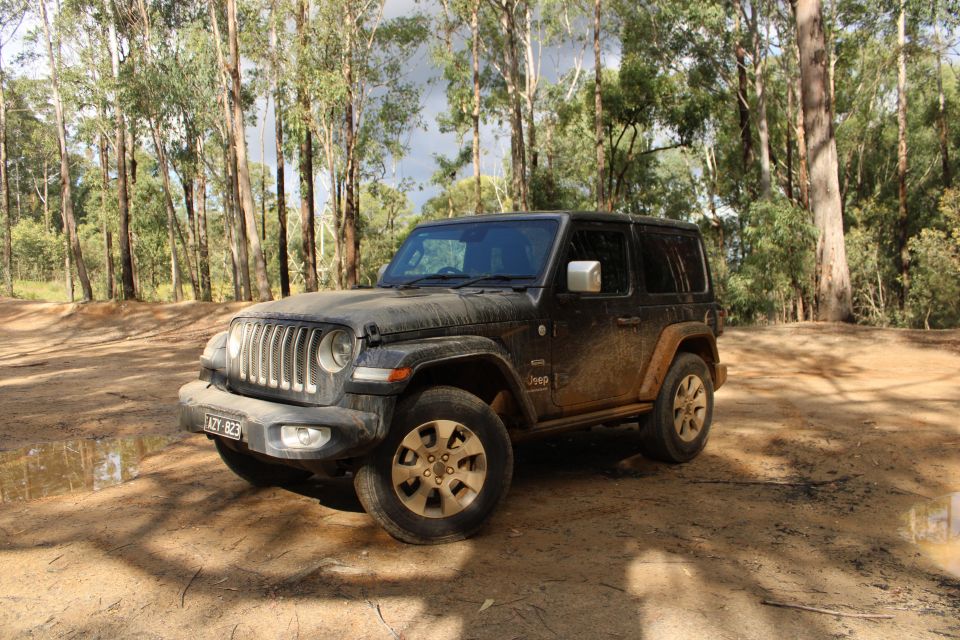
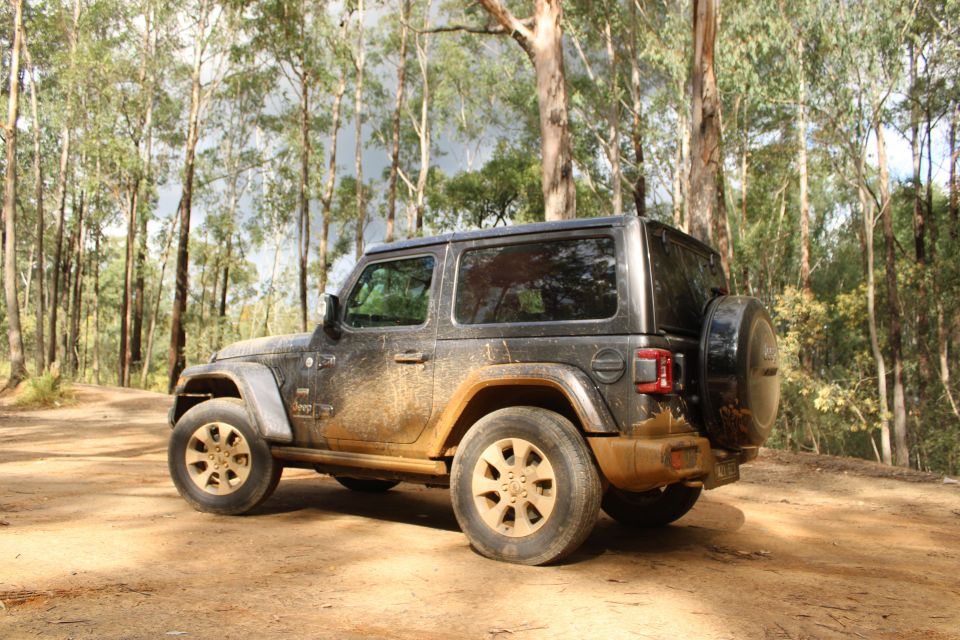
Where expert car reviews meet expert car buying – CarExpert gives you trusted advice, personalised service and real savings on your next new car.
You may get further off-road in a Rubicon with its 32-inch off-road tyres but unless you’re doing some serious rock-crawling, the Overland’s off-road ability is more than sufficient for most detours off the pavement. We took it along numerous off-road tracks and ploughed it through puddles and mud and it never missed a beat.
There are still under-body skid plates and low-range gearing, while there’s also a full-time four-wheel drive mode you can leave it in. To see how you’re tracking on the tracks, Jeep includes information in the gauge cluster about the Wrangler’s pitch and roll and steering angle.
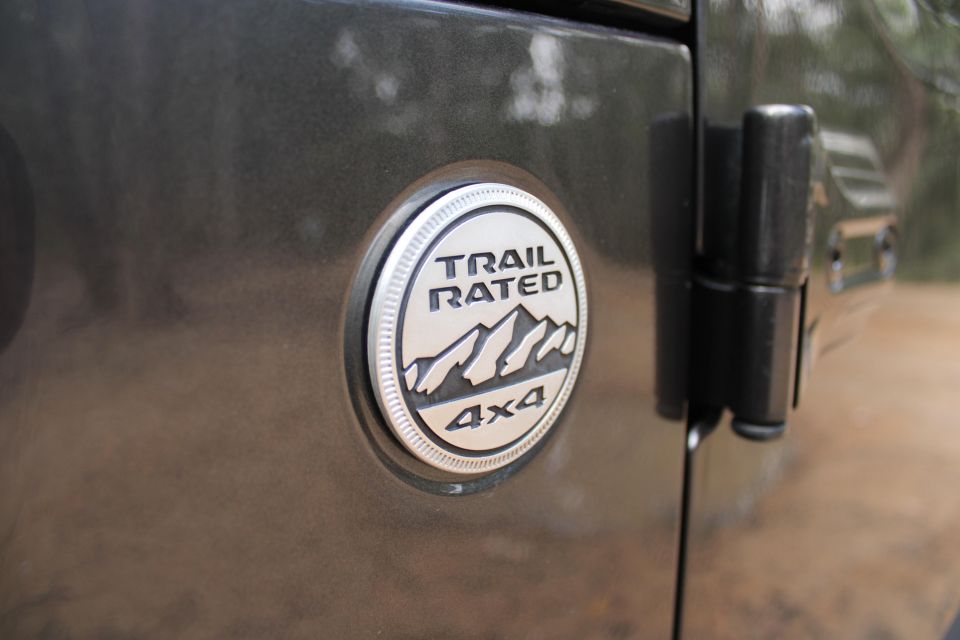
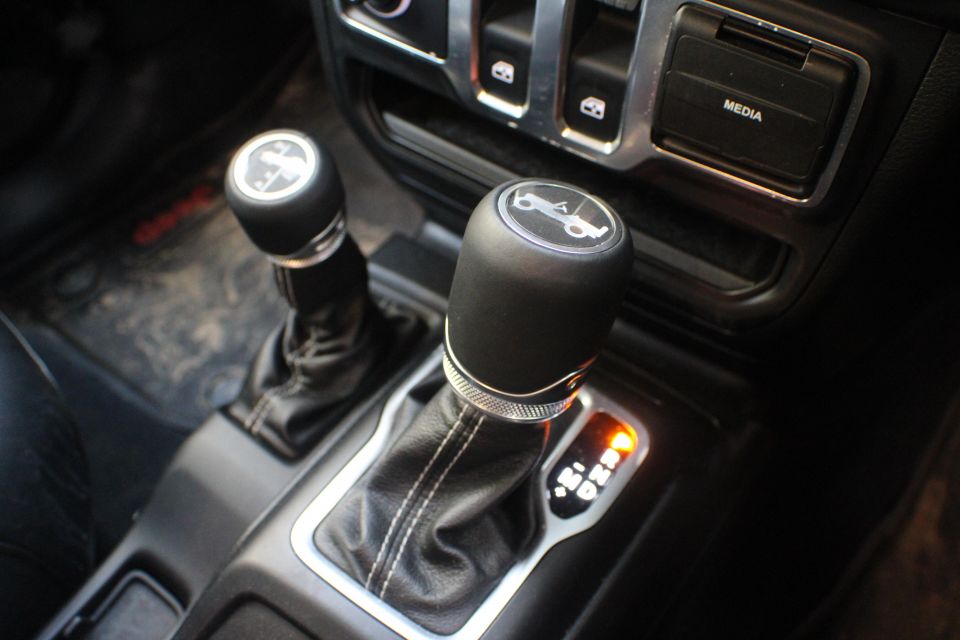
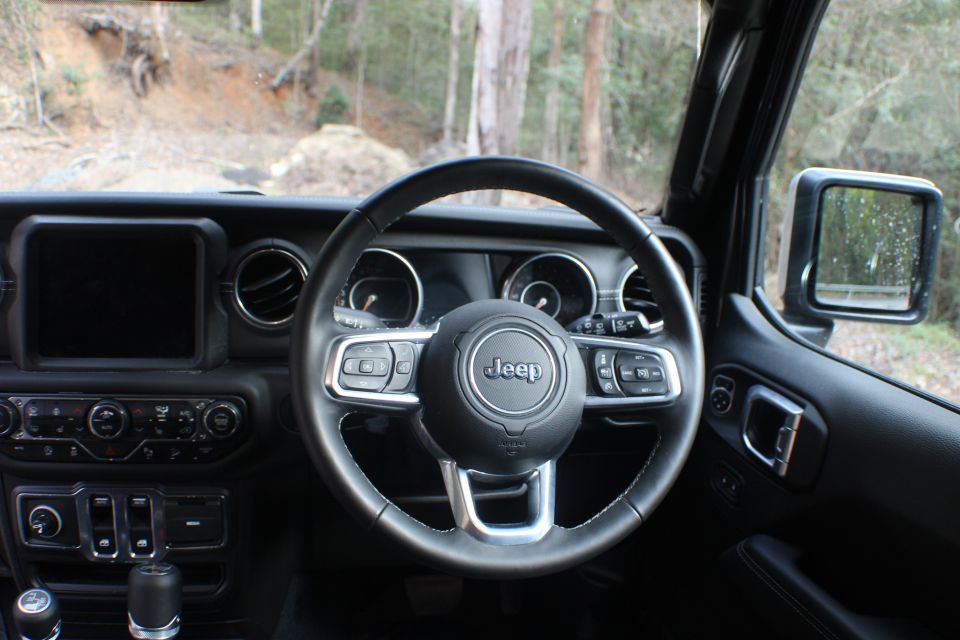
It’s tempting to say the Wrangler belongs on the highway like a Louisiana catfish wrangler belongs at a black-tie gala. After all, you do feel like you have to make thousands of tiny corrections while driving as the brick-like aerodynamics battle the air.
But while it requires your focus, it’s not as unpleasant on the highway as its short wheelbase and 0.454 drag coefficient suggest.
There’s certainly wind noise to contend with but you can still carry on a conversation without shouting. One thing to be mindful of: the removable roof panels don’t sufficiently deaden the sound of, for example, torrential rain hitting the roof. Driving through a car wash sounds like your Wrangler’s been swallowed whole by a monster.
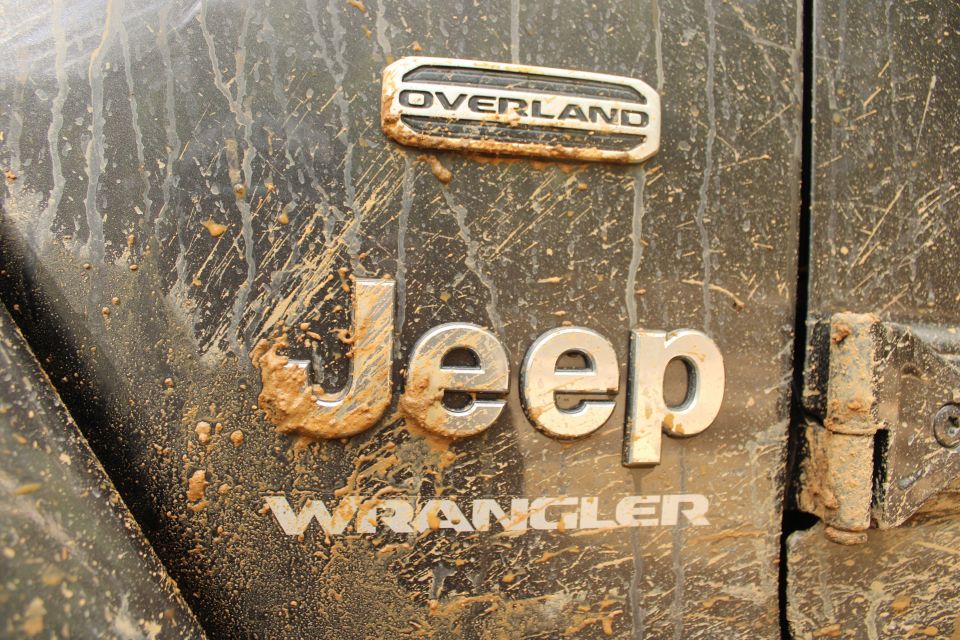
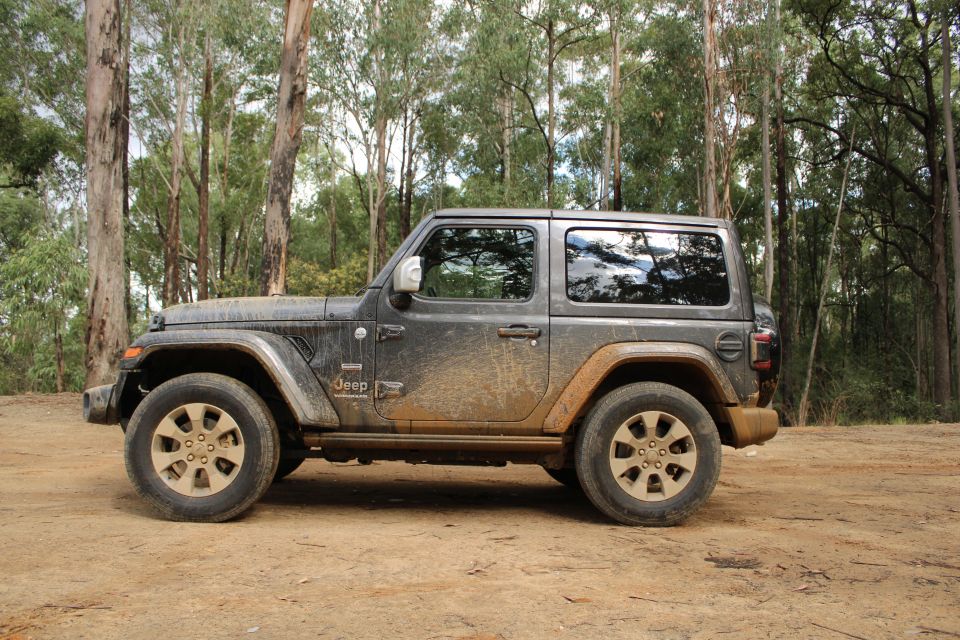

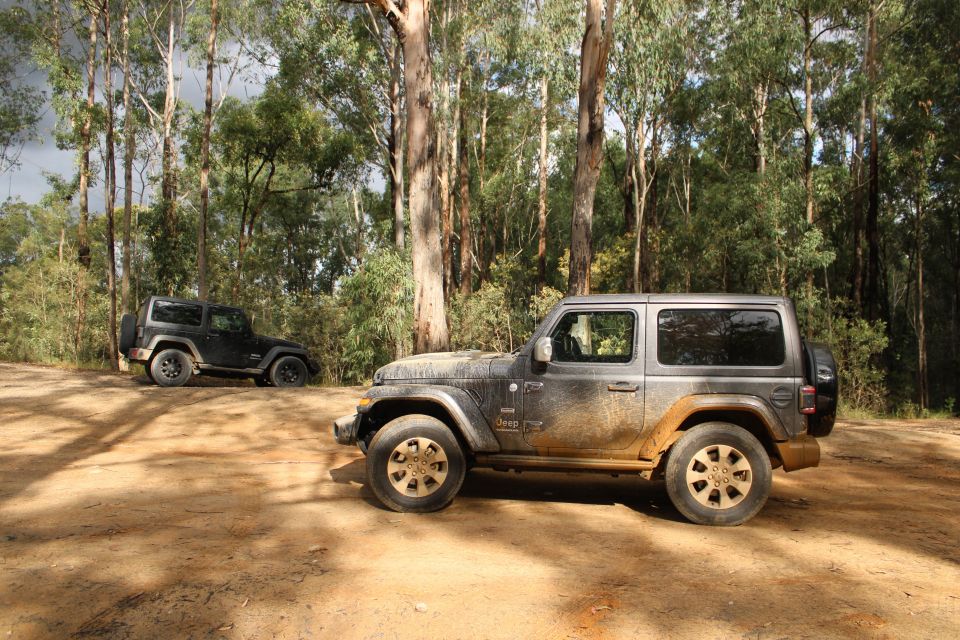
Over a mix of city, highway and off-road driving, our average fuel economy was 12L/100km. Jeep claims it achieves 9.6L/100km on the ADR combined cycle. It only needs 91RON regular unleaded fuel.
The Wrangler requires servicing every 12 months or 12,000km. Jeep now offers five years of capped-price servicing, with each service costing $399. The company also offers a five-year, 100,000km warranty.
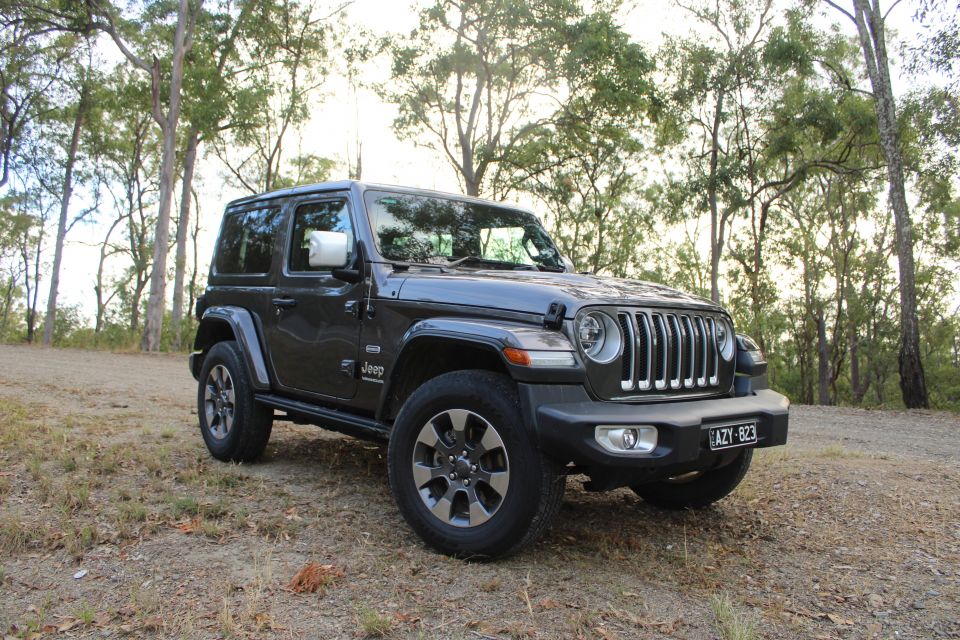

While I had it in my garage, somebody asked me what I thought of the Wrangler. I explained that unless you truly need this level of off-road ability, there are plenty of other SUVs that can still go off-road but are more comfortable in day-to-day driving.
I explained it’s expensive for something with only two doors and the four-door Unlimited is pricier still. And, most importantly, I explained it only had a three-star ANCAP rating.
None of these criticisms phased them. I could have said the Wrangler bursts into flames daily and they probably would have replied, “Yeah, I think I want a green one!”
This isn’t a rational SUV. This is an SUV you buy because you love the way it looks and the image it presents. Fortunately, it’s the best-driving Wrangler ever and it’s more comfortable than you might expect.
While there’s a lot to like about the Wrangler, from its infotainment system to its characterful V6. Unless you really need this level of off-road ability, there are better options out there – but that’s not really the point, is it?
Where expert car reviews meet expert car buying – CarExpert gives you trusted advice, personalised service and real savings on your next new car.
William Stopford is an automotive journalist with a passion for mainstream cars, automotive history and overseas auto markets.


William Stopford
7 Hours Ago


Josh Nevett
8 Hours Ago


Ben Zachariah
1 Day Ago


CarExpert.com.au
1 Day Ago


Damion Smy
2 Days Ago


Damion Smy
2 Days Ago